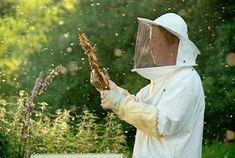
With bees disappearing from Britain’s landscape in alarming numbers, they are conversely swarming towards the top of the agenda at Chelsea.
The honey bee theme can be found in The Fortnum & Mason Garden, which incorporates four Fortnum beehives as ornamental features and functional items. The garden has rich, sumptuous planting, which is predominately red, purple, pink and pale yellow, creating a tapestry of rich colours and texture that is attractive to bees.
Herbaceous plants and low shrubs will create undulating waves and are planted in drifts, as preferred by bees. After Chelsea the beehives will be re-located to the roof of the Piccadilly store for honey production.
Meanwhile the British Beekeepers’ Association Urban Beekeeping exhibit in the Great Pavilion, will demonstrate to visitors how they can safely keep their own honeybees in an urban environment. The exhibit shows how bees can thrive in an urban environment as they have the advantage of a massive range of trees and garden plants on their doorstep, far wider than would be found in today’s monoculture countryside. Bees can find nectar everywhere in the city, from street trees to railway embankments.
The Laurent-Perrier Garden also includes planting that is attractive to bees. “Umbellifers are an important nectar source for many insects and astrantia is very much favoured by bees,” notes the garden’s designer, Jinny Blom.
“It’s rare to see a flower without a bee on it. The astrantias and other plants in the Laurent-Perrier Garden will create the right flower mix which will subtly attract bees.”



